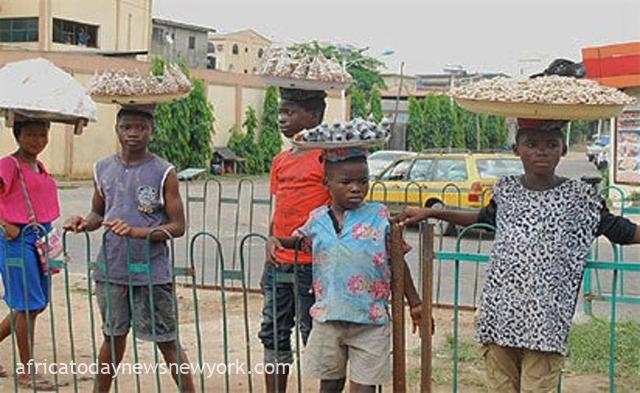The National Bureau of Statistics (NBS), has disclosed that no fewer than 31.75 million or 52.5 percent of children living in Nigeria were being subjected to child labor.
The 2022 survey report titled, “Child Labour in Nigeria at a glance”, released on Friday which was obtained by Africa Today News, New York also showed that 24.67 million or 39.6 percent of children were in child labour during the review period. The NBS further noted that out of the 39.6 percent, 22.9 percent or over 14 million children are in hazardous work.
On working hours, NBS said: “Average weekly working hours of children aged 5-17 years old in child labour, by age group and sex in the 5-17 age group, children in child labour spend an average of 14.6 hours per week working.
“Older children in child labour spend on average more time per week at work than younger children.
“Children aged 15-17 years old in child labour spend an average of 24.6 hours per week working compared to 19.4 hours for children aged 12-14 years old and 9.8 hours for children aged 5-11 years old. Children in child labour who live in rural areas spend 2.3 more hours working on average than children in child labour who live in urban areas.
Read Also: Electricity Demand Rose To 12.12 Million In Q4 2023 – NBS
“Boys in child labour spend more time working per week on average than girls in child labour. However, it should be noted that these estimates do not include time spent performing household chores.”
Meanwhile, in its 2022 Forced Labour in Nigeria at a glance report, the bureau noted that poverty pushed 617,503 Nigerians to forced labour as 36.2 percent of individuals in forced labour in their current job in 2022 were found in the agricultural sector, while 36.9 per cent were found in the service sector other than domestic work.
Citing the International Labour Organization (ILO), Forced Labour Convention, 1930, NO.29, NBS described forced labour as “all work or services which is exerted on any person under the menace of any penalty and for which the said person has not offered himself voluntarily”.
The report showed that men were more likely to be victims of forced labour than women. While 7.8 of every thousand men are in forced labour, 2.7 of every thousand women are in forced labour.

